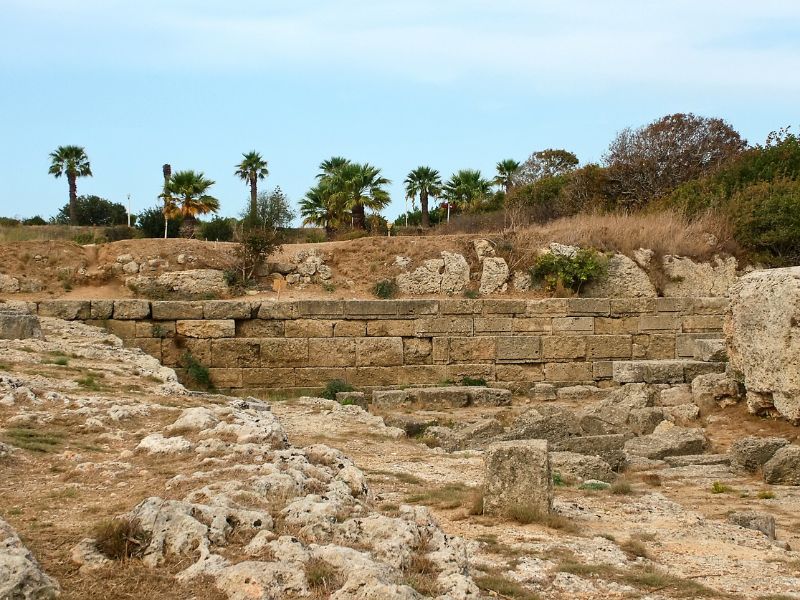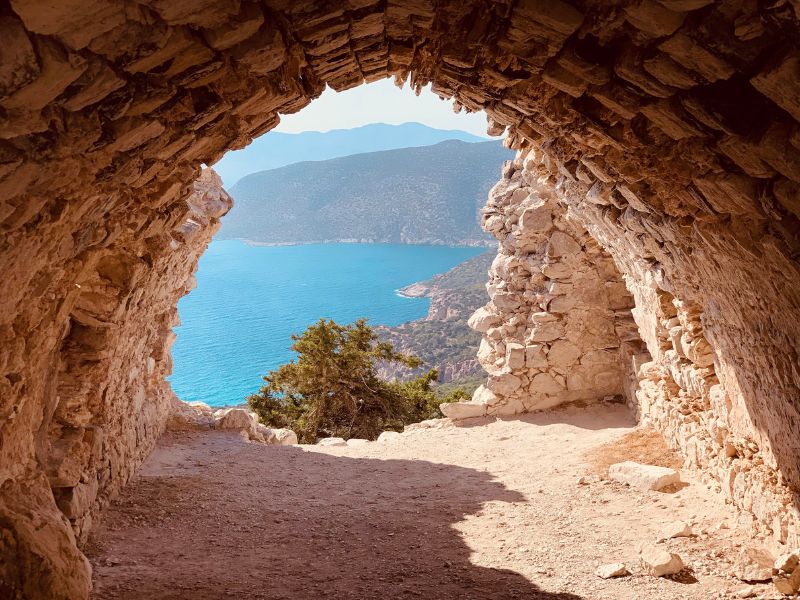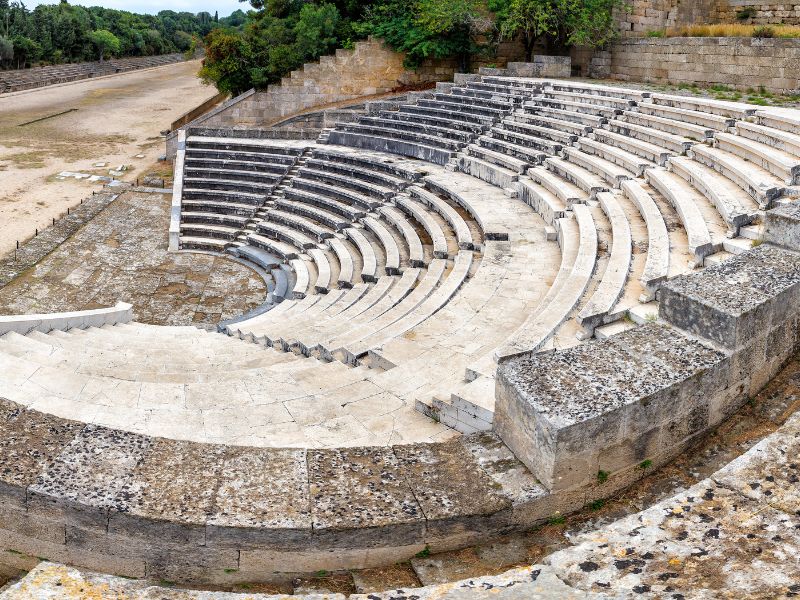
High-Speed Escape: Symi trip from Rhodes
April 10, 2025
The Cultural Legacy of the Acropolis of Rhodes: A Reflection of Public and Religious Life
April 18, 2025Table of Contents
Introduction
A masterpiece of Hellenistic urban planning, the Acropolis of Rhodes demonstrates how ancient builders were able to balance holy structures with the natural contours of the landscape.
The Acropolis, which rose above the city on Monte Smith, was never a military stronghold but rather a cultural citadel with carefully planned elegance in the layout of its temples, theaters, and sports facilities.
Each stairway, terrace, and column represented a vision of harmony between Rhodes’ natural beauty and human accomplishment.
Below it were the stadium, Odeon, library, and gymnasium, while at its center was the Temple of Apollo, which had a view of the harbors. In addition to creating a tangible complex, these buildings served as a symbolic embodiment of the Rhodian values of proportion, beauty, and civic pride.
Architecture of Acropolis of Rhodes: Principles of Vision and Design

The Acropolis’ layout was meticulously planned and hierarchical. This complex transformed Monte Smith’s natural slope into a series of terraces, in contrast to other Greek sanctuaries that were constructed on level ground. Whether it was religious, cultural, or athletic, each level served a specific purpose.
The Temple of Apollo Pythios, which was visible to all arriving ships, crowned the hill, reserving the top for the divine. Below, cultural facilities like the Odeon and library promoted learning and performance, while civic and athletic buildings like the stadium and gymnasium placed an emphasis on mental and physical training.
This arrangement produced a city inside a city where intellectual life, athletics, and worship coexisted peacefully. The Acropolis was a declaration of harmony and order, not just a piece of architecture.
The Apollo Temple at the Summit
The Doric Temple of Apollo Pythios dominated the skyline. Its placement on the highest terrace represented the importance of the divine in public life. The temple faced the harbor and was oriented east-west, matching the imposing staircase that led processions and worshippers.
It was supported by a three-step stylobate and was constructed of finely cut limestone. It probably had six columns in the front and at least eleven on the sides. Several restored columns still stand today, indicating its grandeur despite being damaged by quarrying and earthquakes.
Apollo was regarded as Polieus, the guardian of civic harmony, and his sanctuary strengthened the link between divine authority and the city’s prosperity, making the temple more than just a place of worship.
Cultural and Athletic Complexes

A vibrant cultural quarter was created by the terraces beneath the temple. The city’s youth received training in rhetoric, philosophy, and athletics at the gymnasium, a sizable rectangular complex encircled by stoas. The sounds of wrestling, running, and scholarly discussion filled its courtyards.
Rhodes’ reputation for rhetoric and diplomacy was well-matched with the library, a haven of knowledge that housed scrolls of philosophy, law, and literature. With acoustics built to amplify even the smallest notes, the Odeon was a tiny, covered theater that offered a private setting for poetry, music, and public events.
Last but not least, the Halieia Games, held in honor of Helios, were held in the historic stadium that spanned the slope. When combined, these resources produced a cohesive setting where culture, education, and sports were all integral components of Rhodian excellence rather than distinct endeavors.
Selection of Materials and Aesthetics
The architecture of the Acropolis of Rhodes was notable for its use of luminous materials. Bright local limestone was used to build the structures, and when it glinted in the Aegean sun, it produced a stunning sight that could be seen from both land and sea.
The visual richness of many buildings was enhanced by painted details in vibrant colors that are now gone. Visitors were reminded that the Acropolis was a stage for both beauty and purpose by the rhythm and vibrancy of the sculpture decorations.
The gymnasium’s stoas probably reflected a sophisticated aesthetic by combining Ionic on the inside with Doric on the outside. Terracotta tiles were used to cover the roofs, and marble fixtures might have been used inside to add elegance.
The Acropolis became a living work of art that honored both artistry and civic pride as a result of the interaction of stone, paint, and sculpture.
Perspectives and the Landscape

In addition to housing monuments, the Acropolis was built to provide stunning views. Worshippers and locals gazed down on the busy city and its harbors, which were representations of Rhodes’ maritime might, to the east. The open Aegean to the west served as a reminder of the horizons Rhodes controlled through diplomacy and trade.
The Acropolis’s well-organized terraces stood out against the backdrop of rocky inland hills. A profound philosophical ideal—that human creations should coexist peacefully with nature—was reflected in this marriage of architecture and landscape.
Every colonnade and stairway directed people’s gazes as well as their steps, making the Acropolis a physically and spiritually stimulating place to visit.
Conclusion
The architecture of the Acropolis of Rhodes is still a potent reminder of the ancient world’s inventiveness and foresight. The Rhodians produced more than just an acropolis; they created a living representation of their ideals by fusing religious temples, sports facilities, and cultural areas into a single, cohesive design.
An ideal of balance between the civic, sacred, and natural realms was reflected in the use of vivid limestone, the thoughtful placement of temples, and the incorporation of expansive views. Even though many of its monuments have been reduced to ruin by time, the essence of its design is still present.


